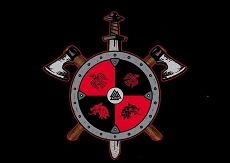In Norse mythology, the number 9 holds significant symbolic importance and appears in various contexts. Here are some of the notable instances where the number 9 is relevant:
- The Nine Worlds: Norse cosmology consists of nine distinct worlds or realms, interconnected by Yggdrasil, the World Tree. These realms are:
- Asgard (home of the Aesir gods)
- Midgard (home of humans)
- Vanaheim (home of the Vanir gods)
- Jotunheim (home of the giants)
- Alfheim (home of the light elves)
- Svartalfheim (home of the dwarves)
- Niflheim (realm of ice and mist)
- Muspelheim (realm of fire)
- Helheim (realm of the dead)
- Odin’s Self-Sacrifice: Odin, the chief of the gods, sacrificed himself by hanging on Yggdrasil for nine days and nine nights to gain knowledge of the runes, a powerful system of symbols used for writing and magical purposes.
- The Nine Mothers of Heimdall: Heimdall, the guardian of the Bifrost (the rainbow bridge connecting Asgard and Midgard), is said to have been born from nine mothers, who are often considered to be sea giants.
- The Nine Nights of Thrudheim: Thor, the god of thunder, stayed for nine nights with the giant Geirrod to prove his strength and endurance.
- The Nine Steps of Thor: After his final battle with the world serpent Jörmungandr during Ragnarok, Thor takes nine steps before succumbing to the serpent’s poison.
- The Gjallarhorn: This horn, which will be blown by Heimdall to announce the onset of Ragnarok, is sometimes described as having nine rings or resonating for nine days.
The frequent appearance of the number 9 in these and other contexts suggests that it was a sacred and powerful number in Norse mythology, symbolizing completeness, magic, and the cycle of life and death.
